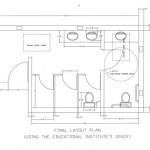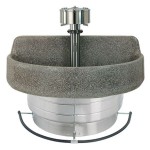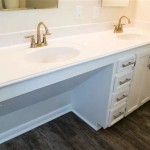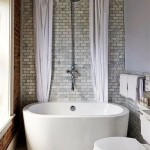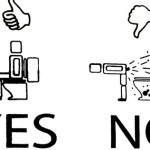Why Are Gnats In the Bathroom? Understanding and Addressing a Common Household Pest
The presence of small flies, often referred to as gnats, in the bathroom is a common household nuisance. These tiny insects, though seemingly harmless, can be incredibly frustrating and their persistent presence raises concerns about hygiene and the underlying conditions attracting them. Identifying the specific type of gnat and understanding the reasons for their attraction to the bathroom environment is crucial for effective elimination.
Several factors contribute to the prevalence of gnats in bathrooms. The humid environment, the presence of moisture and organic matter, and readily available entry points all play a role. Addressing these factors requires a comprehensive approach that includes identifying the specific attractants, eliminating breeding grounds, and implementing preventative measures to ensure these pests do not return.
Identifying the Culprits: Gnat Species Commonly Found in Bathrooms
The term "gnat" is a broad term often used to describe various small flying insects. In the bathroom, the most common offenders generally fall into a few distinct categories:
Drain Flies (Psychodidae): These are perhaps the most frequently encountered gnats in bathrooms. They are small, usually about 1/8 inch long, and have a fuzzy, moth-like appearance. Drain flies are attracted to standing water and organic matter that accumulates in drains, sewers, and septic tanks. They breed in the gelatinous film that lines drainpipes, feeding on decaying organic material. The presence of drain flies strongly indicates a buildup of organic matter within drain systems.
Fruit Flies (Drosophila melanogaster): While primarily known for their attraction to overripe fruit, fruit flies can also be found in bathrooms, particularly if there are sources of fermenting organic matter. This might include spilled shampoo or soap residue left to sit and decompose, or even damp cellulose materials. Fruit flies are small, generally yellowish-brown, and possess characteristic red eyes.
Fungus Gnats (Sciaridae): These are often mistaken for fruit flies or drain flies, but fungus gnats typically are associated with houseplants. However, if there is a source of damp potting soil or decaying organic matter in the bathroom, fungus gnats may thrive. They are small, dark-colored insects with long legs and antennae. Their larvae feed on fungi and decaying plant matter in the soil.
Distinguishing between these species is critical for choosing the appropriate elimination method. For example, treatments targeting drain flies will be ineffective against fungus gnats inhabiting a houseplant.
Contributing Factors: Moisture, Organic Matter, and Entry Points
The bathroom environment presents a confluence of factors that make it an attractive habitat for gnats. Understanding these factors is key to preventing and eliminating infestations.
Moisture: Gnats are attracted to moisture, and bathrooms are inherently humid due to showers, baths, and sinks. Leaky faucets, showerheads, or pipes can create pools of standing water that serve as breeding grounds. Even condensation on tiles and fixtures can provide sufficient moisture for some species to thrive. The consistently damp environment makes it essential to address any leaks promptly and ensure adequate ventilation.
Organic Matter: Decaying organic material is a primary food source for gnat larvae. In bathrooms, this can take many forms: hair accumulating in drains, soap scum buildup, spilled shampoo or conditioner, and even damp cellulose materials like paper towels or cardboard. Drain flies, in particular, rely on the buildup of this organic matter within drainpipes to lay their eggs and sustain their larvae. Regular cleaning and drain maintenance are crucial for mitigating this attractant.
Entry Points: Gnats are small enough to enter homes through various cracks and crevices. Poorly sealed windows and doors, gaps around pipes, and even small openings in the foundation can provide access. In multi-unit dwellings, gnats can also migrate through shared plumbing systems. Inspecting and sealing potential entry points is an important preventative measure. Additionally, ensuring that window and door screens are intact and properly fitted will help prevent gnats from entering from outdoors.
Strategies for Elimination and Prevention: A Multi-Pronged Approach
Eradicating gnats from a bathroom requires a comprehensive strategy targeting both the adult insects and their breeding sites. This approach involves cleaning, trapping, and preventing future infestations.
Source Identification and Elimination: The first step is to identify and eliminate the source of the infestation. Inspect drains for buildup of organic matter and standing water. Check for leaks in faucets, pipes, and showerheads. Ensure that houseplants are not overwatered and that soil is not excessively damp. Removing these attractants is paramount to long-term success.
Drain Cleaning: For drain flies, thorough drain cleaning is essential. This can be accomplished using a variety of methods. Pouring boiling water down the drain can help dislodge some of the organic matter. Commercial drain cleaners specifically designed to break down organic buildup can also be effective, but it is important to follow the manufacturer's instructions carefully. A more environmentally friendly option is to use a mixture of baking soda, vinegar, and hot water. Pour ½ cup of baking soda down the drain, followed by 1 cup of vinegar. Let it fizz for 30 minutes, then flush with hot water. This process can be repeated several times to help clear the drain.
Trapping Adult Gnats: Several types of traps can be used to capture adult gnats. A simple and effective DIY trap can be made using a small dish filled with apple cider vinegar and a few drops of dish soap. The vinegar attracts the gnats, and the dish soap breaks the surface tension of the liquid, causing them to drown. Another option is to use commercially available sticky traps, which can be placed near suspected breeding sites. These traps capture gnats that fly into them, preventing them from reproducing. Flypaper is also an option to trap gnats.
Preventative Measures: After eliminating the current infestation, it is important to implement preventative measures to avoid future problems. Regular cleaning of the bathroom, including wiping down surfaces and removing soap scum, will help eliminate potential food sources. Proper ventilation is crucial for reducing humidity levels. Run the bathroom fan during and after showers and baths to help dry out the environment. Regularly flush drains with hot water to prevent the buildup of organic matter. If houseplants are present, avoid overwatering and ensure proper drainage. Sealing any cracks or crevices in walls, windows, and doors will prevent gnats from entering from outside. Regularly inspect and clean sink overflows.
Professional Assistance: In cases of severe or persistent infestations, professional pest control services may be necessary. A pest control professional can identify the specific gnat species and recommend the most effective treatment strategies. They may also have access to specialized equipment and products that are not available to the general public.
Addressing the presence of gnats in the bathroom requires a multifaceted approach. By identifying the specific species, understanding the contributing factors, and implementing effective elimination and prevention strategies, homeowners can create a less hospitable environment for these unwelcome pests.
How To Get Rid Of Gnats Drain Flies Fruit And Fungus
How To Get Rid Of Gnats In My Bathroom Could They Have Laid Their Eggs Shower Curtain Quora

Gnat In Bathroom Leia Bugguide Net

Fruit Flies In The Bathroom Get Rid Of Them Michael S Plumbing Orlando

Fungus Gnats Arnold Zwicky S Blog

Fungus Gnats Doityourself Com Community Forums

Watch For Fungus Gnats In The House And Take Action If Found News

How To Rid Of Drain Flies Forbes Home

The Simple Trick To Stop Pesky Gnats From Taking Over Your Drains

Gnats In Basement Doityourself Com Community Forums
Related Posts
